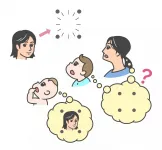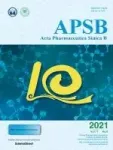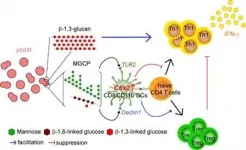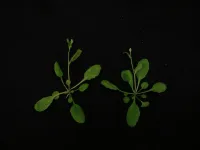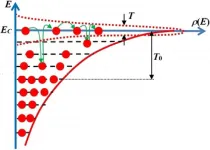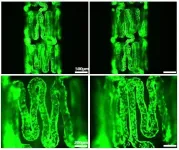AI breakthrough in premature baby care
James Cook University scientists in Australia believe they have made a breakthrough in the science of keeping premature babies alive
2021-06-25
(Press-News.org) James Cook University scientists in Australia believe they have made a breakthrough in the science of keeping premature babies alive.
As part of her PhD work, JCU engineering lecturer Stephanie Baker led a pilot study that used a hybrid neural network to accurately predict how much risk individual premature babies face.
She said complications resulting from premature birth are the leading cause of death in children under five and over 50 per cent of neonatal deaths occur in preterm infants.
"Preterm birth rates are increasing almost everywhere. In neonatal intensive care units, assessment of mortality risk assists in making difficult decisions regarding which treatments should be used and if and when treatments are working effectively," said Ms Baker.
She said to better guide their care, preterm babies are often given a score that indicates the risk they face.
"But there are several limitations of this system. Generating the score requires complex manual measurements, extensive laboratory results, and the listing of maternal characteristics and existing conditions," said Ms Baker.
She said the alternative was measuring variables that do not change - such as birthweight - that prevents recalculation of the infant's risk on an ongoing basis and does not show their response to treatment.
"An ideal scheme would be one that uses fundamental demographics and routinely measured vital signs to provide continuous assessment. This would allow for assessment of changing risk without placing unreasonable additional burden on healthcare staff," said Ms Baker.
She said the JCU team's research, published in the journal Computers in Biology and Medicine, had developed the Neonatal Artificial Intelligence Mortality Score (NAIMS), a hybrid neural network that relies on simple demographics and trends in heart and respiratory rate to determine mortality risk.
"Using data generated over a 12 hour period, NAIMS showed strong performance in predicting an infant's risk of mortality within 3, 7, or 14 days.
"This is the first work we're aware of that uses only easy-to-record demographics and respiratory rate and heart rate data to produce an accurate prediction of immediate mortality risk," said Ms Baker.
She said the technique was fast with no need for invasive procedures or knowledge of medical histories.
"Due to the simplicity and high performance of our proposed scheme, NAIMS could easily be continuously and automatically recalculated, enabling analysis of a baby's responsiveness to treatment and other health trends," said Ms Baker.
She said NAIMS had proved accurate when tested against hospital mortality records of preterm babies and had the added advantage over existing schemes of being able to perform a risk assessment based on any 12-hours of data during the patient's stay.
Ms Baker said the next step in the process was to partner with local hospitals to gather more data and undertake further testing.
"Additionally, we aim to conduct research into the prediction of other outcomes in neo-natal intensive care, such as the onset of sepsis and patient length of stay," said Ms Baker.
INFORMATION:
ELSE PRESS RELEASES FROM THIS DATE:
2021-06-25
RICHLAND, Wash.--Earth bears many signs of human influence, from warming that exceeds pre-industrial temperatures to a rising sea. Add to that list, now, the human influence on the timing of Earth's water cycle, revealed by a new study led by researchers at the U.S. Department of Energy's Pacific Northwest National Laboratory.
The research, published this week in the journal Nature Climate Change, peels back layers of climatological noise to uncover a clear signal: from 1979 to 2019, increases in greenhouse gases and reductions in human-generated aerosols triggered an approximate four-day delay in seasonal rainfall over tropical land and the Sahel. The lag could mean delayed crop production, ...
2021-06-25
We can generally recognize an object, even if it is presented for a very brief time. However, if another object appears immediately following the first object, the perception on the first object is impaired such that we do not notice its existence. This perceptual phenomenon, called "visual backward masking," is used in vision science to study how visual perception is processed in the brain. Interestingly, this phenomenon occurs even if the second object does not spatially overlap the first object, such as a contour or four dots surrounding the object.
The occurrence of this phenomenon is assumed to be due to a disruption of "feedback processing." When we see something, visual ...
2021-06-25
In 2021 Acta Pharmaceutica Sinica B (APSB) is celebrating its 10th anniversary. The journal was founded with the goal of creating a global high-level forum centred around drug discovery and pharmaceutical research/application. APSB was included by Chemical Abstracts in 2011, accepted by PubMed Central in 2015, indexed by Science Citation Index in 2017 and has evolved to become one of the most important international journals in the field of pharmaceutical sciences.
Volume 11, issue 6 is a special issue marking the beginning of a series of celebratory events ...
2021-06-25
The development of therapeutic drugs for inflammatory bowel disease, an intractable immune disease, and multiple sclerosis - an autoimmune disorder - is gaining traction. A research team from the Department of Life Sciences at POSTECH and a joint research team at ImmunoBiome Inc. have uncovered that a yeast-derived polysaccharide mixture inhibits the onset and progression of immune disorders.
The number of cases of Crohn's disease and ulcerative colitis - both inflammatory bowel diseases - in Korea was about 18,000 and 37,000 respectively as of 2019, increasing about 2.3 times ...
2021-06-25
With a goal of breeding resilient crops that are better able to withstand drought and disease, University of California San Diego scientists have developed the first CRISPR-Cas9-based gene drive in plants.
While gene drive technology has been developed in insects to help stop the spread of vector-borne diseases such as malaria, researchers in Professor Yunde Zhao's lab, along with colleagues at the Salk Institute for Biological Studies, demonstrated the successful design of a CRISPR-Cas9-based gene drive that cuts and copies genetic elements in Arabidopsis plants.
Breaking ...
2021-06-25
Tsukuba, Japan - The COVID-19 pandemic has changed the way people eat, work, shop and go to school. Now, researchers from Japan have found surprising differences in the way people use healthcare services--including house calls from doctors.
In a study published this month in BMC Emergency Medicine, researchers from the University of Tsukuba have revealed that patterns in illness type and severity did change during the pandemic--with unexpected trends that may tell us about how people use health care services when personal contact carries inherent risk.
In Tokyo, private after-hours house call services (AHHC) provide in-home medical service outside of regular ...
2021-06-25
Quantum dots (QDs) are semiconductor particles only a few nanometers across that, thanks to their small size, exhibit peculiar optical and electronic properties due to quantum mechanics. With existing and foreseen applications in screens, lighting, lasers, and energy harvesting, research in quantum dots has been steadily progressing. In particular, colloidal QDs (CQDs) have been in the nanotechnology spotlight for over a decade.
CQDs are semiconductor nanocrystals that can be produced easily from solution-based processes, which make them suitable for mass production. However, for CQD-based devices to operate at their best, the quantum dots should be monodisperse--that is, ...
2021-06-25
The contemporary materials industry raises the problem of creating a microscopic theory that allows to describe the observed physicochemical properties of a wide class of substances which are in demand in modern industry, medicine, and agriculture. A general and consistent theory will help to obtain reliable information from experimental data on the structure of matter, existing interactions and dynamic processes occurring in it, which can help in the synthesis and quality control of prospective materials.
The study of the molecular structure of a substance and its intermolecular interactions is one of the most important and interesting tasks facing modern science. Of particular ...
2021-06-25
Medical materials that can be inserted into the human body have been used for decades in the field of regenerative medicine - for example, stents that can help dilate clogged blood vessels and implants that can replace teeth or bones. The prolonged use of these materials can result in serious adverse effects and loss of various functions - for example, inflammatory responses, generation of fibrous tissues around the material, and generation of blood clots that block blood vessels.
Recently, a Korean research team has drawn attention for developing a technology to reduce ...
2021-06-25
Curtin University research has found tiny amounts of gold can be trapped inside pyrite, commonly known as 'fool's gold', which would make it much more valuable than its name suggests.
This study, published in the journal Geology in collaboration with the University of Western Australia and the China University of Geoscience, provides an in-depth analysis to better understand the mineralogical location of the trapped gold in pyrite, which may lead to more environmentally friendly gold extraction methods.
Lead researcher Dr Denis Fougerouse from Curtin's School of Earth and Planetary Sciences ...
LAST 30 PRESS RELEASES:
[Press-News.org] AI breakthrough in premature baby care
James Cook University scientists in Australia believe they have made a breakthrough in the science of keeping premature babies alive
